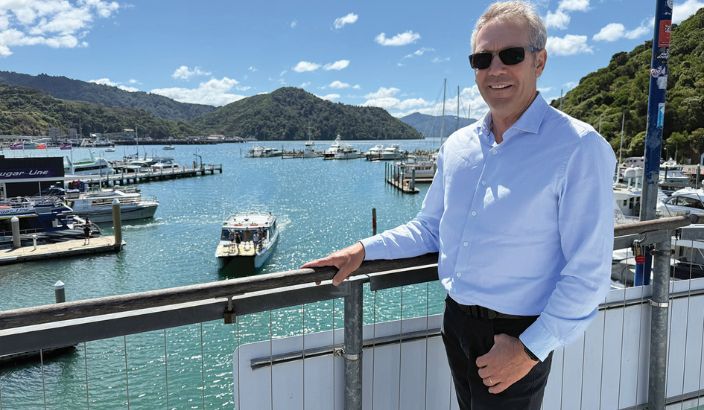Opinion: Options aplenty for on-going efficient freight movement across Cook Strait


Kaikōura MP Stuart Smith who has been visiting Picton and discussing options for improving future freight transport across Cook Strait. Photo: Supplied.
Stuart Smith, MP for Kaikōura
For years, we’ve taken it as gospel that rail-enabled ferries are the backbone of efficient freight movement across the Cook Strait, but are they?
Let’s start with a simple truth: freight doesn’t care how it travels, as long as it gets there on time and in one piece. The choice of transport mode boils down to a juggling act of factors - type of goods, size, weight, and time sensitivity. Flexibility is the key for businesses and consumers, and that’s where road freight shines, accounting for up to 92.8% of all freight movements in New Zealand.
Nevertheless, whilst road transport has the speed and flexibility for just-in-time freight, when it comes to heavier bulky freight, rail has the edge, particularly over longer distances, accounting for 11.5% of freight movement when measured in tonne-kilometres.
But are rail-enabled ferries essential for rail freight? A viable alternative to rail-enabled ferries is road bridging, which allows for the continued use of rail for long-distance land transport while using rubber-tyred trailers on the ferry for crossing Cook Strait.
While some may express concerns about potential delays due to additional handling requirements, it’s important to note that the primary factor affecting transit times in ferry operations is vessel turnaround, rather than the specific mode of transport used on board. Furthermore, road bridging offers advantages in terms of space utilisation on ferries. Rubber-tyred trailers can be loaded more densely than rail carriages. This increased capacity per crossing can result in a reduced number of trips, yielding both economic and environmental benefits through decreased fuel consumption and emissions.
And let’s not forget the job creation potential. More handling at ports means more hands-on deck, breathing new life into our coastal communities.
Still skeptical? In 2016, KiwiRail, Centre Port and Port Marlborough travelled to Europe to look at ferry options and were surprised to find only one rail-enabled ferry in operation, which was soon to be retired in favour of road bridging. This is fast becoming the preferred choice, even in traditional rail strongholds. It’s not about abandoning rail, but about using each freight transport mode where it makes the most sense. Rail-enabled ferries have served us well, but it’s time to recognise that they’re not the only way to bridge the gap.
By considering the flexibility of road bridging, we can create a more efficient, responsive, and future-proof freight network across the Cook Strait and beyond.
There has been much hand wringing out of the false premise that rail can only succeed with rail enabled ferries. This is not the case. It is important that there is a balanced debate to ensure that whichever option is chosen to replace KiwiRail’s current ferries, their usefulness will not be solely defined by whether or not they are rail enabled.
Whatever the decision, having new ferries to connect the South and North Islands will be welcome news and will provide a more reliable and efficient service.
